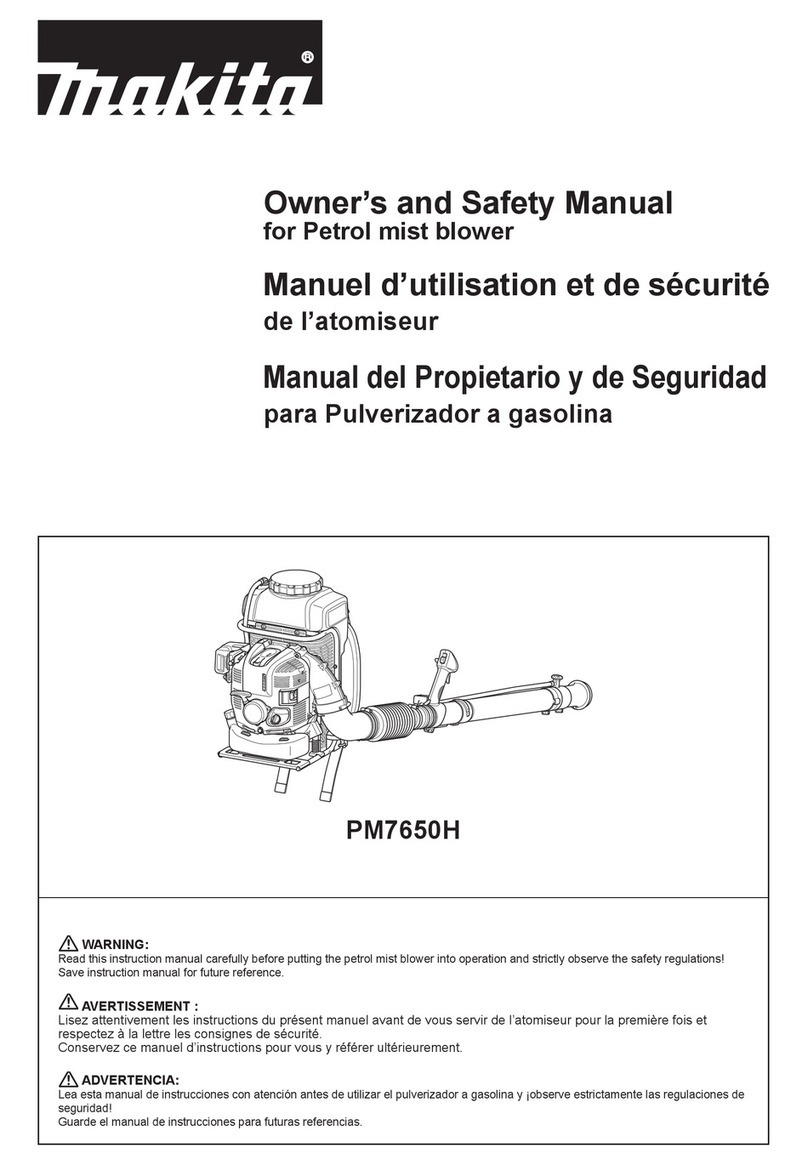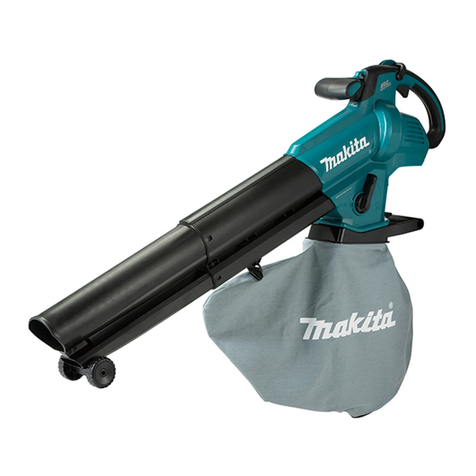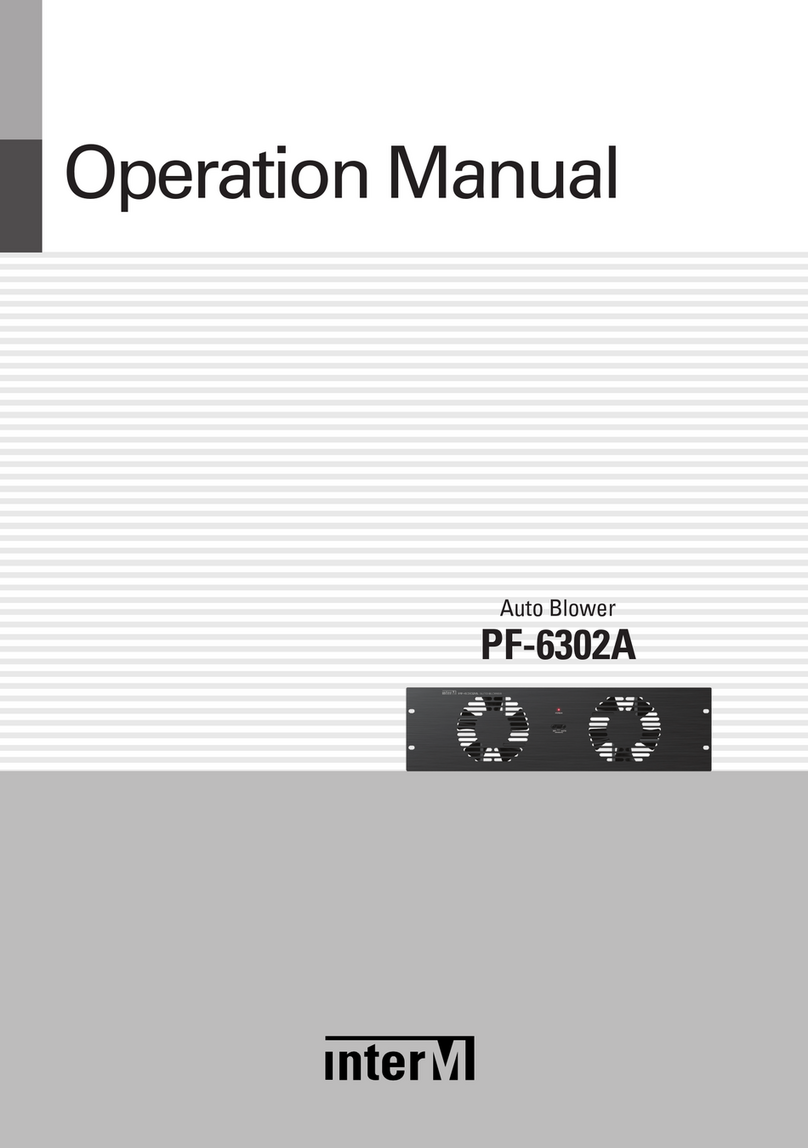Rooster Thunder Sweeper User manual


Document No. RTS900-0 Page | 2
Table of Contents
Introduction ----------------------------------------------------------------------------------------------------Pg. 3
Specifications -------------------------------------------------------------------------------------------------Pg. 4
Safety Decals -------------------------------------------------------------------------------------------------Pg. 5
Safety Rules -------------------------------------------------------------------------------------------------- Pg. 6, 7
Storage Safety ----------------------------------------------------------------------------------------------- Pg. 7
Assembly Instructions --------------------------------------------------------------------------------------Pg. 8-10
Operation Safety ---------------------------------------------------------------------------------------------Pg. 11, 12
Attaching Unit to Machine ---------------------------------------------------------------------------------Pg. 12
Start Up --------------------------------------------------------------------------------------------------------Pg. 13
Proper Engine RPM ----------------------------------------------------------------------------------------Pg. 13
Swing Adjustment -------------------------------------------------------------------------------------------Pg. 14
Maintenance --------------------------------------------------------------------------------------------------Pg. 15
Electrical Schematics --------------------------------------------------------------------------------------Pg. 16, 17
Case Drain Kit -----------------------------------------------------------------------------------------------Pg. 18-20
Warranty Forms ---------------------------------------------------------------------------------------------Pg. 21-26

Document No. RTS900-0 Page | 3
INTRODUCTION
Congratulations on the purchase of your new Rooster Thunder Sweeper®! This unit was
carefully designed and manufactured to give you many years of dependable service. Be sure to
read and understand the operator’s manual and observe all safety precautions before operating
unit.
This manual contains instructions for the safe operation and maintenance of the Rooster
Thunder Sweeper®. The reliable operation, safety, and long service life of this machine depend
on two important factors:
1. The quality and frequency of periodic inspection and maintenance.
2. A common sense approach to its operation.
This Rooster Thunder Sweeper®has been designed specifically for the poultry industry to blow
accumulated dust and debris off the ceilings, walls, and related equipment of broiler barns after
the barn has been emptied of birds. The machine will also effectively perform a final cleaning of
the floor after the bulk of the litter has been removed.
The Rooster Thunder Sweeper®may also be used for other uses as well, such as general
grounds maintenance. You, however, as the Owner, are responsible to make certain this
machine is used only in a manner consistent with its original design intent and that its use does
not place people, livestock, or other property at risk of harm or injury.
OPERATOR ORIENTATION –The directions left, right, front, and rear as mentioned in this
manual are as seen from the skid-steer loader operator’s seat, facing forward.
CUSTOMER REFERENCE INFORMATION
Serial Number: _____________________
Date Purchased: ____________________
Dealer Name: ______________________
Dealer Tel #: _______________________

Document No. RTS900-0 Page | 4
Specifications
Shipping weight:
Shipping dimensions:
Max Fan Impeller RPM:
Rated GPM @ Max RPM:
Maximum Relief Setting of Machine Blower Is
Attached To:
Approximate Air Velocity:
Angle of Adjustment from side to side:
Discharge Diameter:
Available Option Kit Part Numbers:
Hydraulic Cylinder Kit
Scraper Blade Kit---
Additional Pushbutton Wiring Harness Kit
for machine Blower is attached to
Case Drain Connection Kit for Loader
550 LBS
62”W x 45”L x 40.5”H
4200 RPM
17.8 GPM
3000 PSIG
Just under 200 MPH
90°, Centered Left to Right
6”
RTSCYLKIT
RTSBLADE
RTS10598
See Page 18.
Manufactured in Lancaster, PA
Distributed exclusively by: Binkley & Hurst, LP
700 E. Linden Street Richland
Richland, PA 17087
Toll-free: 888-414-7518 Fax: 717-866-2005
Website Information:
Binkley & Hurst Home Page: http://www.binkleyhurst.com/
LVI Litter Processor Page: http://www.binkleyhurst.com/equipment/lvi-litter-processor/
LVI Dealer List: http://www.binkleyhurst.com/equipment/lvi-litter-processor/lvi-dealer-list/

Document No. RTS900-0 Page | 5
SAFETY DECALS
The safety decals are placed on the Rooster Thunder Sweeper®at the time of manufacture. It is
important that all the decals are kept clean and readable at all times. If any decals have become
illegible or have been removed, replacements are available from Binkley & Hurst, LP.
TEL: 888-414-7518 FAX: 717-866-2005
THESE SAFETY DECALS ARE ON YOUR ROOSTER THUNDER SWEEPER®

Document No. RTS900-0 Page | 6
SAFETY RULES
SAFETY AWARENESS
Safety hazards always exist around operating machinery, especially for inexperienced persons,
persons untrained in the safe operation of the equipment, or persons just passing through the
operating zone area. YOU the owner are responsible to train all operators or persons who may
come into contact with this machine to follow the safety precautions and guidelines specified in
this manual.
Remember, YOU are the key to safety. Good safety practices not only protect you, but also the
people around you. Make these practices a working part of your safety program. Be certain that
EVERYONE operating this equipment is familiar with the recommended operating and
maintenance procedures and follows all the safety precautions. Most accidents can be prevented.
Do not risk injury or death by ignoring good safety practices.
BINKLEY & HURST, LP CANNOT BE HELD RESPONSIBLE FOR ANY ACCIDENT. THE OEM
CANNOT BE HELD RESPONSIBLE FOR ANY ACCIDENT.
The safety precautions listed might not necessarily be all-inclusive and others may apply to the
user that are specific to his particular industry or application.
Only persons trained in the safe operation of this machine as spelled out in this manual should be
permitted to operate it. Operators must use common sense at all times when operating the
machine. At all times the machine must be operated in accordance with the safety decals on the
machine and the precautions set forth in this manual. All operators must thoroughly understand
these instructions and hazards before attempting to operate this machine.
All operators and related personnel should be trained to THINK and PRACTICE SAFETY.
NOTICE: FAILURE TO OBSERVE THE SAFETY PRECAUTIONS CONTAINED IN THIS
MANUAL MAY RESULT IN SEVERE PERSONAL INJURY, PROPERTY DAMAGE, OR
DEATH.
1. ALWAYS follow the instructions in this manual when operating unit.
2. NEVER allow any untrained personnel to operate this unit.
3. DO NOT use machine for purposes other than for which it was designed.
4. DO NOT modify the equipment in any way. Unauthorized modifications could impair the
safety and/or function of the equipment and could significantly affect its life or warranty.
5. NEVER operate the unit without all safety labels in place.
6. NEVER poke any tools of any kind into blower intake while fan impeller is rotating.

Document No. RTS900-0 Page | 7
7. ALWAYS allow the fan to coast to a stop naturally. DO NOT attempt to break or slow the
motion of the impeller artificially.
8. PLACE ALL controls in neutral, stop the engine, set the park brake, remove ignition key
and wait for all moving parts to come to a complete stop before servicing, repairing, or
unhooking machinery.
STORAGE SAFETY
1. Store the unit in an area away from human or livestock activity.
2. Do not permit children to play on or around the machine.
3. Store the unit in a dry, level area.

Document No. RTS900-0 Page | 8
ASSEMBLY INSTRUCTIONS
1. Remove the lags that hold the blower discharge pipe and supporting pipes to the skid.
2. Assemble blower discharge pipe onto blower discharge cone 1.5” (Fig. 1). Be sure band
clamp tab bracket (Fig 2) is pointing straight down as shown. Be sure blower discharge
pipe is aligned as squarely to the blower discharge cone as possible.
Figure 1
Discharge pipe
Discharge cone
Figure 2
Band Clamp Tab

Document No. RTS900-0 Page | 9
3. Install only one of the ¼ x 1” lags at position shown in Figure 3.
4. Install the blower discharge pipe support pipes as shown in Fig. 4-7. Install the bolts
loosely until both support pipes are mounted, then tighten the bolts securely.
Figure 3
Install 1st lag screw here
Figure 4
Figure 5

Document No. RTS900-0 Page | 10
5. Inspect blower discharge cone at Fig. 8 & 9. Blower discharge cone must be aligned
squarely with the fan housings before installing the remaining three lags that fasten the
discharge pipe to the discharge cone. If discharge cone is out of square with the fan
housings, it will put extra stress on one of the fan housing ears, and may lead to breakage
of the fan housing. After it is squarely aligned with the fan housings, install the remaining
three lags. Then as a final check, make sure that there is not excessive pressure on the
fan housings. You should be able to move the discharge pipe & cone back and forth
slightly in the fan housing ear.
Figure 6
Figure 7
Figure 9
Hydraulic motor side
Figure 8
Fan Intake Side
Fan housing ear
Fan housing ear
Discharge cone tab
Discharge cone tab

Document No. RTS900-0 Page | 11
OPERATION
GENERAL OPERATING RULES
1. Read and understand the Operator’s Manual and all safety decals before operating the
equipment.
2. NEVER allow any personnel to ride on the blower unit.
3. DO NOT use the unit as a work platform. NEVER work under raised booms without
properly supporting them. STAY OUT from underneath the attachment at all times prior to
properly supporting or blocking unit.
4. Keep all body parts, such as hands, head, and feet, clear of pinch points on the blower
unit when operating.
5. Keep all body parts, such as hands, head, and feet, as far away as possible from fan
intake and discharge areas.
6. Make sure that all personnel and livestock and tools are clear of working areas of the unit
before and while operating unit.
7. NEVER leave equipment unattended with the engine running or with the attachment in a
raised position.
8. NEVER operate the attachment without properly latching it to the machine it is attached to.
KNOW YOUR EQUIPMENT
1. Know your equipment’s capabilities, dimensions, and operating procedures before
attempting to operate unit.
2. Visually inspect your equipment before beginning operation. NEVER operate equipment
that is not in proper working condition with all safety devices & labels intact.
3. Check all hardware to ensure it is tight. Make sure all connection devices are properly
installed and secured.
4. Remove and replace and damaged or fatigued or excessively worn parts.
PROTECT AGAINST FLYING DEBRIS
1. ALWAYS wear proper safety attire and protection when operating the unit.
2. BE SURE all personnel and livestock are removed from the area before operating the
machine. Make sure all personnel stay back at least 100 feet from the blower while
operating. Operator must remain in his seat while operating the blower unit at all times.
3. BE AWARE of flying debris and dust that could come into contact with other people or
livestock. Do not operate unit if doing so will bring flying debris or dust into contact with
other people or livestock.

Document No. RTS900-0 Page | 12
USE CARE WITH HYDRAULIC FLUID PRESSURE
Hydraulic fluid under pressure can penetrate the skin and cause severe injury or death. Hydraulic
leaks under pressure may not be visible. Keep all body parts away from hydraulic hoses, fittings,
or components when under pressure. Before connecting or disconnecting quick couplers inspect
for any leaking or damaged hoses or components. If an accident occurs and escaping fluid
penetrates your skin, SEEK MEDICAL ATTENTION IMMEDIATELY.
ATTACHING BLOWER UNIT TO MACHINE
ALWAYS CONNECT THE CASE DRAIN HOSE BEFORE OPERATING BLOWER UNIT! All
hydraulic hoses must be properly coupled to the skid-steer or whatever machine the blower is
attached to. Of special concern is the case drain hose.
The purpose of the case drain hose is to provide a free path to the hydraulic reservoir for the oil to
drain away that slips past the internal components of the hydraulic motor and into the motor case.
This oil does have the option of passing through an internal check valve in the motor to the return
line port. Assuming no case drain line is connected, the pressure in the motor case bearing on
the shaft seal will be whatever the return line oil pressure is at the motor.
The pressure in the return line at the motor of the blower unit is too high to operate without the
case drain line connected. OPERATING THE BLOWER UNIT FOR EVEN A SHORT TIME
WITHOUT THE CASE DRAIN HOSE CONNECTED TO THE MACHINE RESERVOIR MAY
DAMAGE THE MOTOR SHAFT SEAL AND WILL VOID THE MANUFACTURER’S
WARRANTY. The case drain line must be connected regardless of what machine or type of
machine the blower unit is attached to and powered by. It must be connected regardless of the
hydraulic oil flow or maximum relief pressure of the machine that it is attached to.
It is imperative that the case drain line provides a free path from the motor case to the machine oil
reservoir. Any blockage in the line could be as harmful as leaving the line disconnected. It must
be free of restriction so that the hydraulic oil pressure in the case drain line at the motor is less
than 50 psig.
Case drain connection kits are available to install on skid-steers or loaders that have not been
equipped with one and can be purchased through Binkley & Hurst.
Upon initial attachment to your machine, you will need to verify the correct hook-up of the quick
couplers for your machine. The male and female quick couplers may need to be unscrewed from
the hydraulic lines and exchanged in order for the blower unit to work properly on your machine.
You determine this by attaching the unit to your machine and attempting to operate it. If the fan
operates normally when you turn your auxiliary hydraulic power on, you can assume it is hooked
up correctly. If the fan only spins slowly and does not move much air, then reverse the quick
couplers.
If your machine is set up so you can reverse the oil flow direction in your auxiliary hydraulic lines,
then you do not need to exchange the quick couplers. You can simply open your machine’s valve
in the direction that makes the blower fan operate properly.

Document No. RTS900-0 Page | 13
START UP
1. MAKE SURE skid-steer loader or the machine powering the blower is brought up to
normal operating temperature before starting blower unit.
2. When starting blower fan, throttle engine back first and start fan gently. Once fan is
started, bring engine up to proper RPM.
DETERMINING PROPER ENGINE OPERATING RPM
If your skid-steer GPM rating is higher than the blower’s rated GPM of 17.8, then pay attention to
this section. Otherwise, if your skid-steer GPM is below this point, you may ignore this section.
Study the following table to determine the approximate MAX RPM you should operate your loader
engine at while running the blower. Exceeding the MAX RPM will likely trigger your loader’s
system relief valve, creating unnecessary heat and wasting energy, without creating much
additional airflow from the blower. If your loader’s hydraulic fluid overheats while operating the
blower, try throttling back your loader engine a few hundred RPM’s.
For example, if your skid-steer has a rated flow of 22 GPM at 2400 Engine RPM, then the MAX
Engine RPM you should use while operating the blower is 1942 RPM. This should give you an
approximate guide of what Engine RPM you need to run your skid-steer to obtain 17.8 GPM of
hydraulic oil flow.
If you do not see the exact GPM or RPM of your skid-steer in the table, round your ratings to the
nearest rating listed in the table.

Document No. RTS900-0 Page | 14
MANUAL SWING ADJUSTMENT
The base unit comes with a Manually-adjusted swing from left to right. Five Positions are
available that allow blower discharge to be pointed out to the right at 45° angle from straight front
to pointing out the left at a 45° angle from straight front. To adjust discharge angle, stop unit, pull
up on red-handled spring-loaded pin and position blower at desired angle. Be sure that the
spring-loaded pin is fully engaged in the slot.
CYLINDER SWING ADJUSTMENT
Units equipped with a hydraulic cylinder swing option kit can be adjusted from the cab of the skid-
steer. For these units a momentary pushbutton pendant switch is provided to be accessible to the
operator in the cab of the skid-steer. These units are infinitely adjustable between a 45° angle to
the right to a 45° angle to the left. To adjust the discharge angle, the blower fan must be rotating.
Pushing the “Up” Button of the pendant switch should swing the discharge angle to the left.
Pushing the “Down” Button should swing the discharge angle to the right.
If you have one of these units, you may notice that the discharge angle gradually changes as you
operate the fan for a period of time without you adjusting the discharge angle. This is normal and
is nothing to be concerned about. It is caused by a very small amount of normal internal leakage
past the spool of the hydraulic valve and pressurizing the ports of the cylinder.
Air may tend to accumulate in the cylinder system and cause a “springy” feel in the adjustment of
the discharge angle. Operating the fan and cycling the discharge angle swing back and forth a
few times should clear this up.
If you intend to operate the blower unit on multiple machines, you will need to purchase additional
pushbutton harness kits for those machines.

Document No. RTS900-0 Page | 15
MAINTENANCE
1. Follow ALL of the operating, maintenance, and safety instructions & procedures in this
manual.
2. PLACE ALL controls in neutral, stop the engine, set the park brake, remove ignition key
and wait for all moving parts to come to a complete stop before servicing, repairing, or
unhooking machinery.
3. NEVER attempt to work on the unit until all moving parts have come to a stop and the
machine blower unit is attached to is shut down.
4. Keep hands, feet, hair, and clothing away from all moving and/or rotating parts.
5. Clear the area of all bystanders, especially children, when operating, repairing, or making
adjustments to the machine.
6. Before working on the unit or any of its components, ensure that it has been sufficiently
blocked or supported. Use only tools, jacks, or hoists of sufficient capacity for the job.
7. Follow good shop practices:
a. Keep service area clean and dry.
b. Be sure electrical outlets and tools are properly grounded.
c. Use adequate lighting for the job at hand.
d. Place all tools and parts away before leaving the shop.
8. Before restarting the unit, clear all tools and equipment away and make sure all personnel
are clear of the unit.
9. Make sure all guards and safety decals are in place and properly secured when
maintenance work is completed.
10. Periodically check to make sure all hardware is tight and properly secured.
11. DO NOT modify the equipment in any way. Unauthorized modifications could impair the
safety and/or function of the equipment and could significantly affect its life or warranty.
12. Grease the two pivot points of the unit once a month or every 8 hours with a good quality
Lithium grease.
13. Frequently inspect hydraulic hoses to make sure they have not been damaged.
14. Use only genuine OEM replacement parts.

Document No. RTS900-0 Page | 16

Document No. RTS900-0 Page | 17

Document No. RTS900-0 Page | 18
Rooster Thunder Sweeper®
Option Kit: Case Drain Connection Kit for Loader
PART NUMBERS:
RTSCDK-10 KIT WITH 10’ HOSE LENGTH
RTSCDK-20 KIT WITH 20’ HOSE LENGTH
RTSCDK-30 KIT WITH 30’ HOSE LENGTH
DESCRIPTION:
Kit adds a case drain quick coupler connection to skid-steer or tractor front-end loader that is not
already equipped with a case drain connection. Kit includes quick coupler, mount bracket, hose,
and adapter fitting to ¼” male NPT for connection to machine hydraulic oil reservoir.

Document No. RTS900-0 Page | 19
INSTALLATION INSTRUCTIONS
1. Disconnect the hose (Fig. 1, #1) from the adapter (Fig. 1, #2). Remove the adapter from
the bulkhead fitting (Fig. 1, #3). Remove the jam nut (Fig. 1, #4) from the bulkhead fitting.
Remove quick coupler (Fig. 1, #6) and bulkhead fitting from bracket (Fig. 1, #5) as a unit.
2. Mount the quick coupler bracket (Fig. 1, #5) on the skid-steer boom near the other quick
couplers. Use the self-tapping screws provided with the kit. Do not weld bracket onto
boom unless the proper procedures for welding on your skid-steer are followed. Welding
on your machine could damage its electrical components.
3. Insert quick coupler (Fig. 1, #6) and bulkhead fitting (Fig. 1, #3) through the hole in the
bracket. Install jam nut (Fig. 1, #4) to bulkhead fitting and tighten securely. Reinstall the
adapter (Fig. 1, #2) to the bulkhead fitting.
4. Re-connect the hose (Fig. 1, #1) to the adapter. Tighten securely, but do not over tighten.
5. Route the case drain hose along the other skid-steer hydraulic lines back toward the skid-
steer reservoir. Use cable ties supplied with kit to secure it in place. Be certain that hose
is clear of all pinch points on boom.
6
5
4
3
2
1
Figure 1

Document No. RTS900-0 Page | 20
6. Connect the other end of the hose to some point on skid-steer hydraulic oil reservoir. The
hose may be cut-to-length as needed and the hose barb fitting then simply pushes into
the hose. It is a special hose barb and hose that does not need and should not have any
hose clamps on it. See Figure 2 for how it should look when it is installed on the hose.
The hose barb fitting is a #4 JIC Female swivel. Supplied with that is a male adapter from
#4 male JIC to ¼” male NPT. Machine reservoirs vary, and you may need to find specific
adapters to adapt to a port on your reservoir. You are responsible to find a place to
connect to the reservoir.
7. It is extremely important that the hose is connected to the reservoir with no restrictions!
The maximum pressure allowed in the case drain line at the motor on the blower is 50
psig.
8. Make certain that the hose is adequately protected at any places (pinch points, etc.) with
potential to damage it. Make certain that it does not kink at all in all possible boom
positions. Make certain that all fittings and connections have been properly tightened.
9. Periodically check the case drain hose for any damages from abrasion or bending.
Installed properly, it should hold up well.
Figure 2
Table of contents
Popular Blower manuals by other brands

Masport
Masport Energy Flex LBV 4090 owner's manual
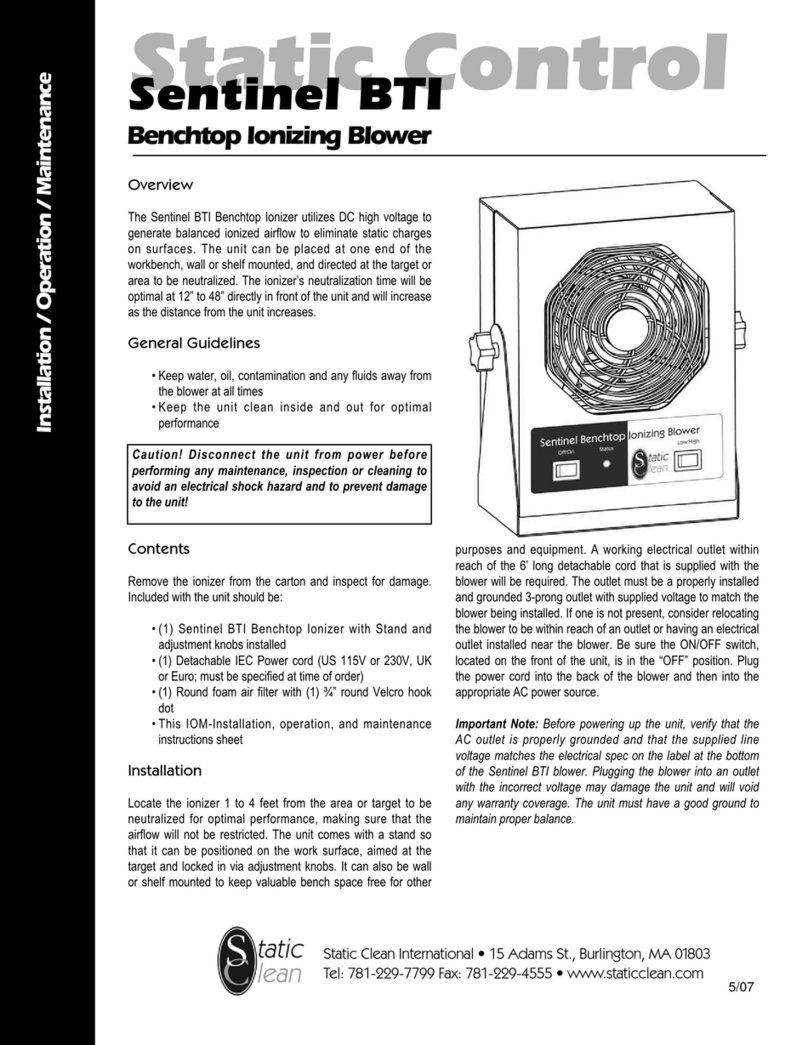
Static Clean
Static Clean Sentinel BTI Installation operation & maintenance
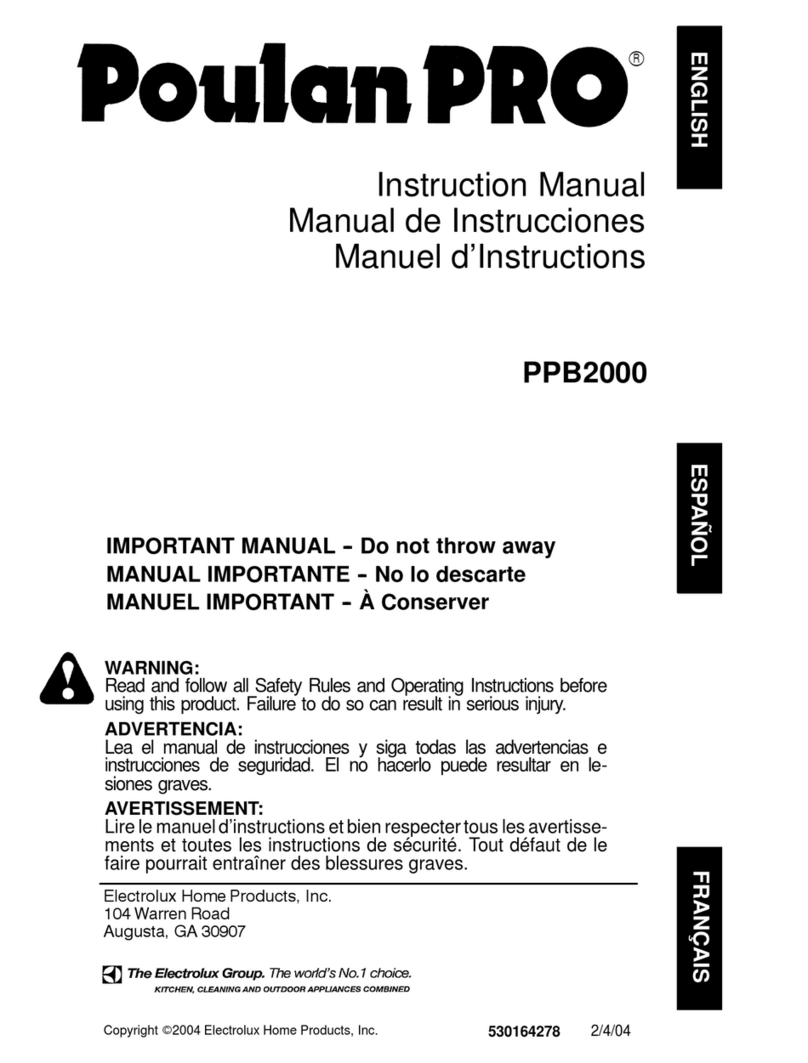
Poulan Pro
Poulan Pro PPB2000 LE instruction manual
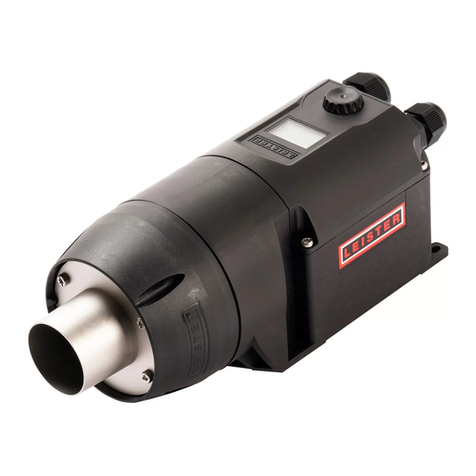
Leister
Leister MONO 6 SYSTEM operating instructions
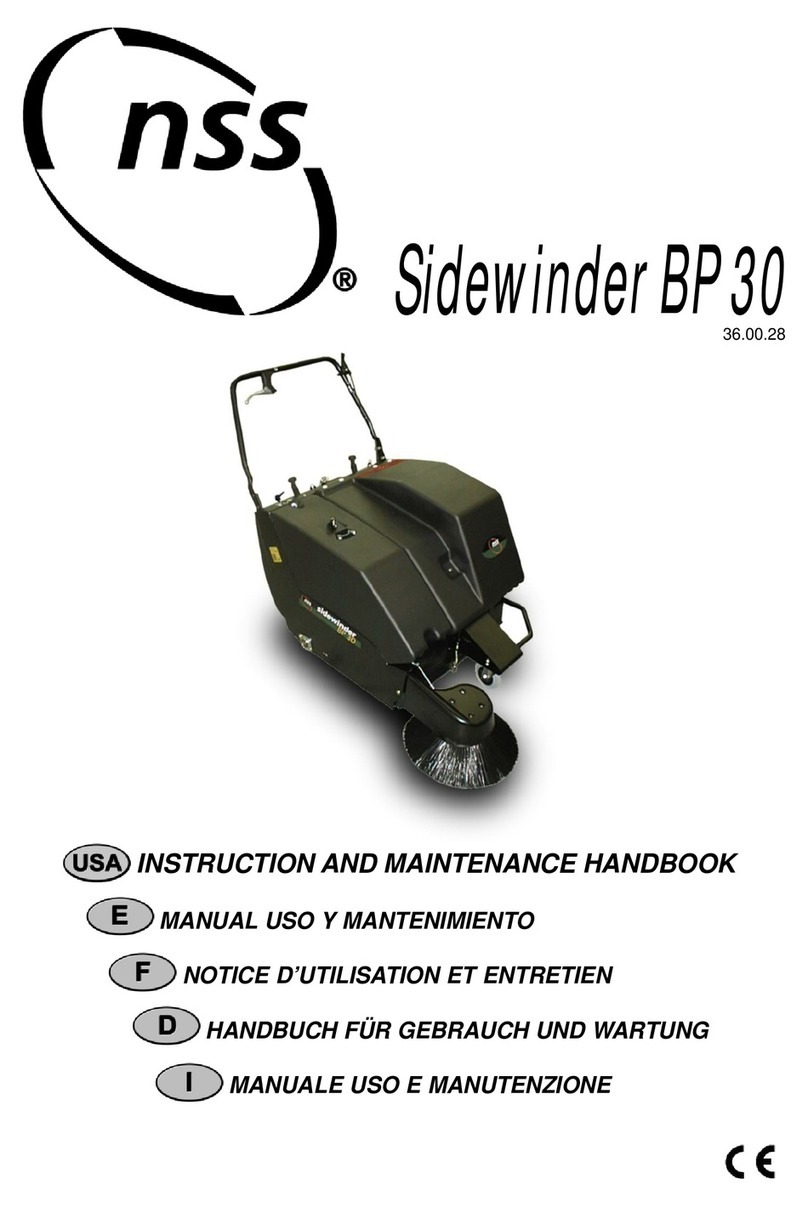
NSS
NSS Sidewinder BP 30 Instruction and maintenance handbook
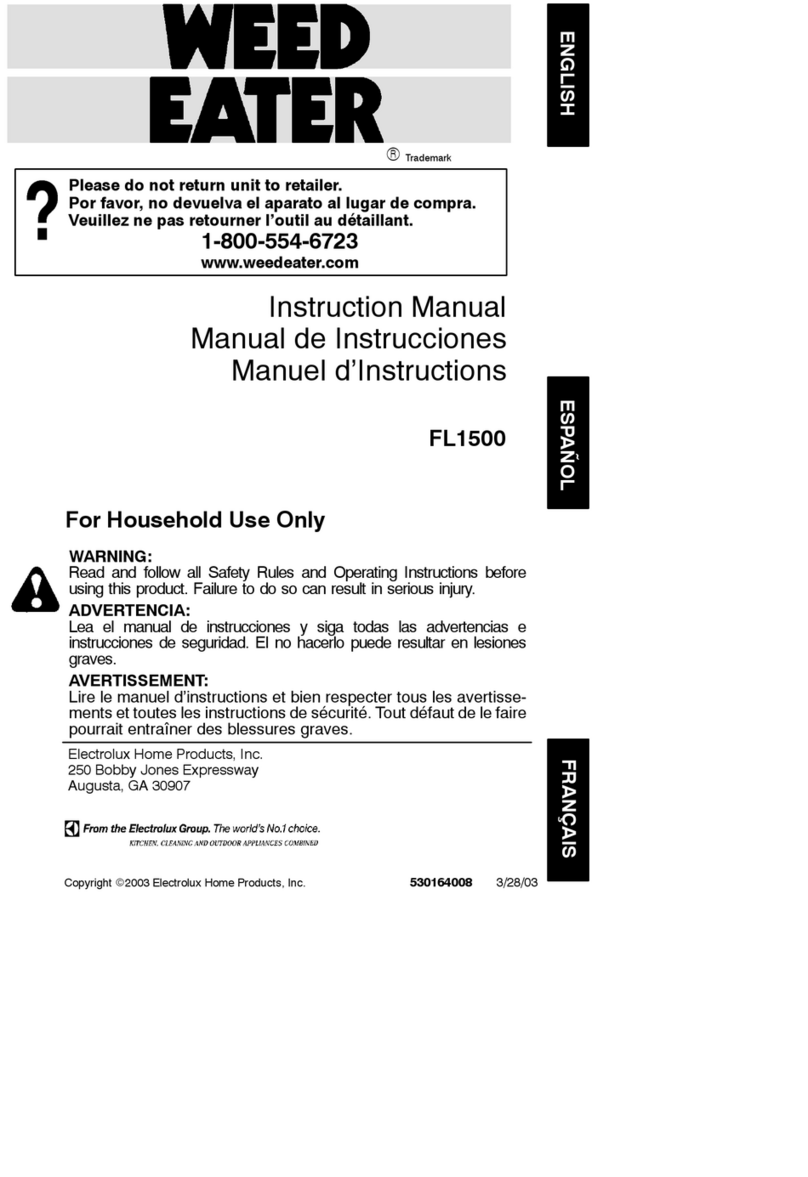
Weed Eater
Weed Eater 530164008 instruction manual

Poulan Pro
Poulan Pro 530088125 instruction manual
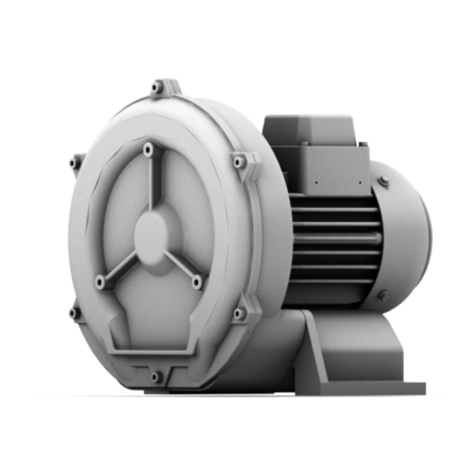
Elektror
Elektror SD Series Operating and assembly instructions

Echo
Echo ES-210 - 11-09 Operator's manual
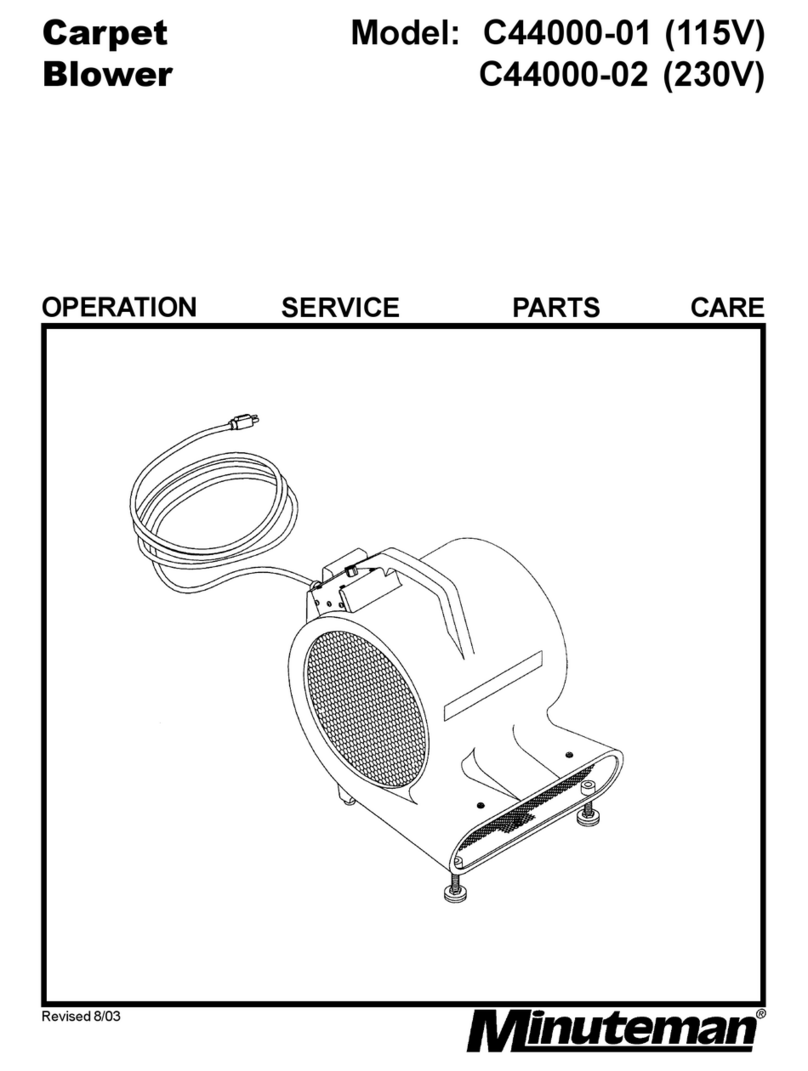
Minuteman
Minuteman C44000-01 Operation, service and parts manual

Minuteman
Minuteman Parker TE9036 Operation service parts care
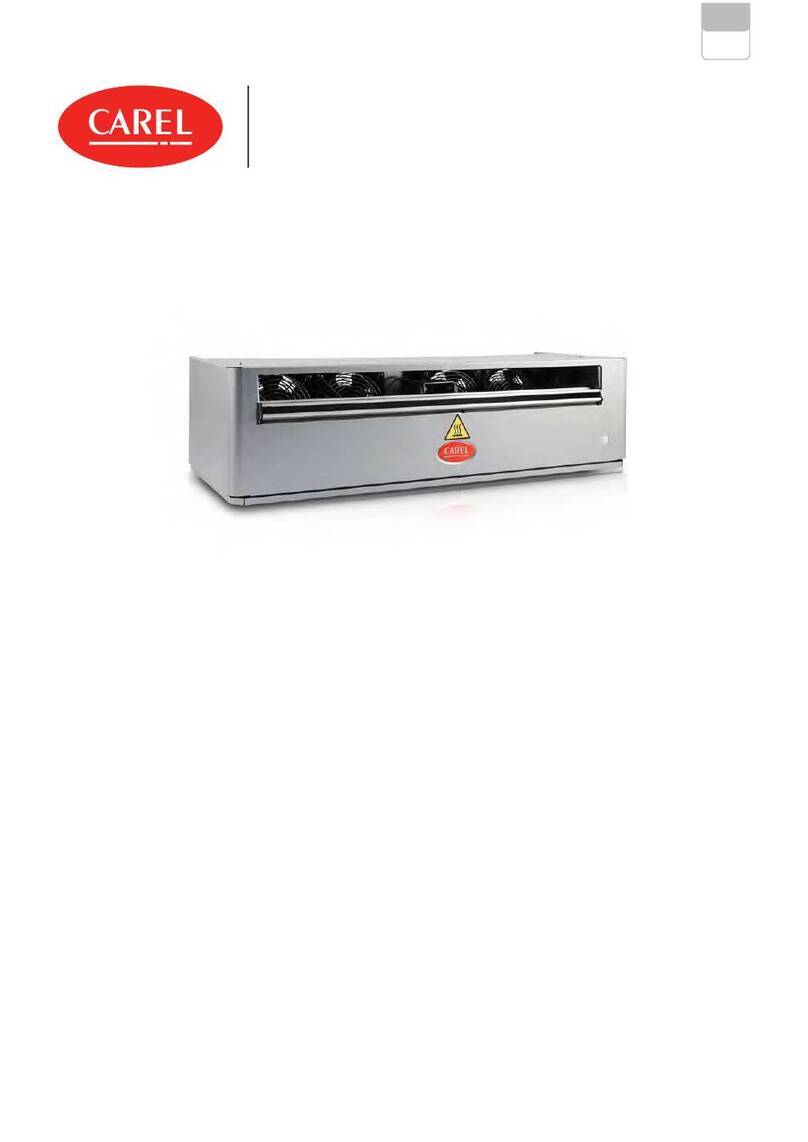
Carel
Carel VRDXL00001 user manual


